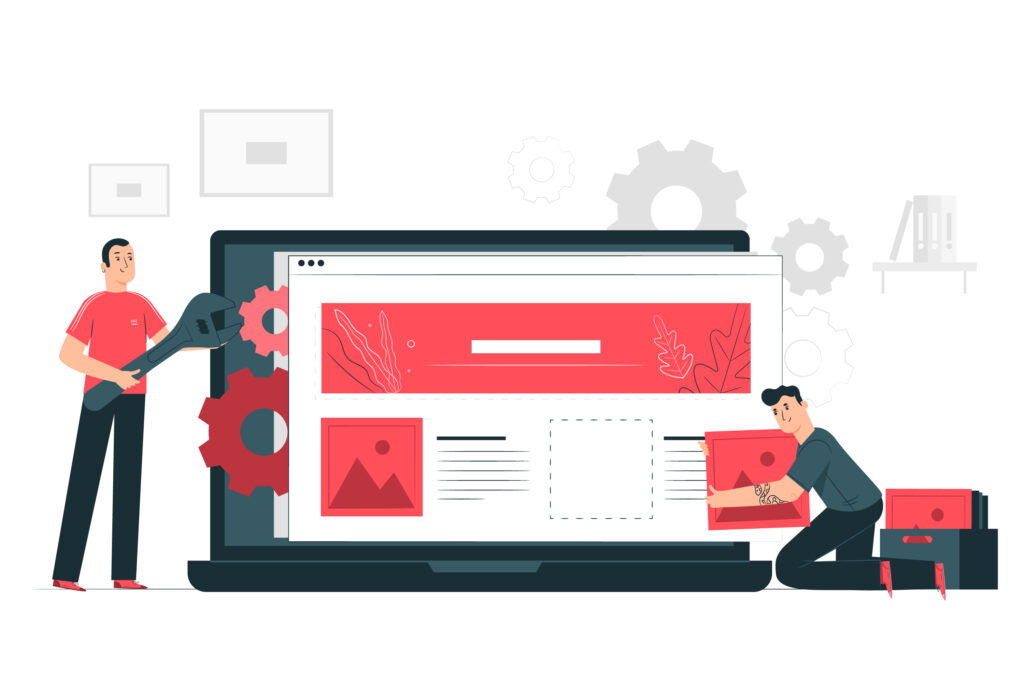In today’s lightning-fast online world, website performance reigns supreme. A lagging, clunky website isn’t just an annoyance it’s a one-way ticket to losing viewers and conversions. So, how do you craft a high-performance website that zips across screens, keeps users engaged, and helps your business thrive? Don your coding goggles, as we dive into practical tips for building high-performance websites that leave the competition in the dust.

1. Master the Metrics: Demystifying Website Performance
Before zooming into optimization, let’s define our target. What exactly makes a high-performance website? It’s a cocktail of several factors, each crucial for a smooth user experience:
- Page Load Speed: The time it takes for a page to fully render. Aim for under 3 seconds – anything longer leads to user frustration and potential abandonment.
- Accessibility: Ensuring everyone, regardless of ability, can easily navigate and interact with your website.
- Responsiveness: Flawlessly adapting to different screen sizes and devices, from desktops to smartphones.
- Conversion Rate: The percentage of visitors who take a desired action, like signing up for a newsletter or making a purchase.
2. Optimize Like a Pro: Tools and Techniques for Peak Performance
Now, let’s arm ourselves with the tools and tactics to build websites that tick all the performance boxes:
- Image Optimization: Compress images without sacrificing quality. Tools like TinyPNG and JPEGmini are your allies here.
- Leverage Caching: Store frequently accessed data locally so it doesn’t need to be downloaded every time, resulting in faster loading times.
- Minimize HTTP Requests: Every image, script, and element on your page requires an HTTP request to load. Prioritize essential elements and combine others when possible.
- Choose a Blazing-Fast Hosting Provider: Invest in a reliable hosting provider with robust infrastructure and excellent server response times.
3. Craft a User-Centric Journey: Design for Speed and Engagement
Remember, website performance isn’t just about raw speed; it’s about creating a seamless, enjoyable experience for visitors. Here’s how:
- Intuitive Navigation: Make it clear and easy for users to find what they need. A well-organized menu, logical page hierarchy, and consistent design contribute greatly.
- Meaningful Content: Ditch the fluff and focus on content that informs, engages, and adds value. Compelling visuals and concise copy keep users glued to your pages.
- Mobile-First Mindset: Over half of the web traffic comes from mobile devices. Prioritize mobile responsiveness and optimize your website for smaller screens.

4. Measure, Analyze, Optimize: The Performance Feedback Loop
Building a high-performance website is an ongoing process. Tools like Google PageSpeed Insights and GTmetrix provide valuable insights into your website’s performance metrics. Analyze these reports regularly, identify areas for improvement, and implement changes to continuously optimize your website.
5. Seek Expert Help: When DIY Isn’t Enough
Webchirpy’s website development service specializes in crafting high-performing websites that are not only fast and responsive but also visually stunning, user-friendly, and conversion-driven. Our team of experienced developers and designers will work closely with you to understand your unique needs and objectives, crafting a website that is a perfect fit for your brand and audience.
Remember, a high-performance website is an investment that pays off in user engagement, conversions, and ultimately, business success. So, don’t settle for mediocre – implement these tips, leverage expert help if needed, and watch your website transform.


 From Coimbatore
From Coimbatore